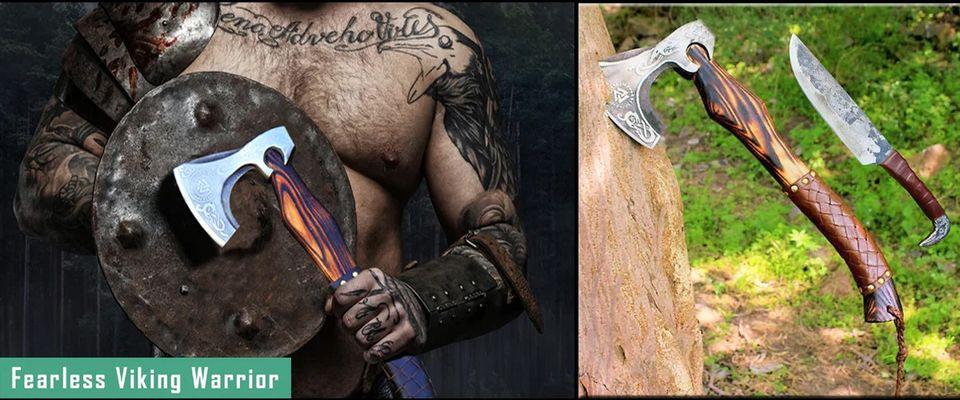But in addition to being a weapon, the Viking axe also defines the art, bloodiness, and fierceness of the Norse people. From combat weapons to everyday household tools, the Viking axe was one of the most important items of Viking culture. Here we’ll learn about the significance and design of this weapon and its long-lasting influence on the avant-garde subculture.
The Significance of the Viking Axe
This made the axe an element of Norse warrior culture. It was supposed to symbolize strength, courage, and skill. Axes were universally available to all warriors, so they appeared very regularly on the battlefield (hence, swords have always been reserved for the greatest). The Viking awl became not just a weapon for battle but also a symbol of skill and prestige.
Types of Viking Axes
There had been numerous types of axes used by the Vikings, each designed for unique functions:
Dane Axe: Known for its long manage and huge blade, the Dane awl became favored for its reach and power in conflict. It should deliver devastating blows to warring parties and is often used by elite warriors.
Bearded Axe: This axe featured a distinct hook on the lower fringe of the blade, thinking of flexible fight strategies, which incorporate disarming an opponent or pulling them off stability.
Throwing Axe: Smaller and lighter, the ones axes have been designed for throwing. They had been frequently used in skirmishes and were probably easily carried by way of warriors.
Design and Craftsmanship
The Viking axes were really lovely to look at. Blacksmiths made very strong blades ( iron and steel ) that would last through the rigors of combat. The axe was a very versatile weapon in that it allowed for all thrusting and slicing motions. Lots of axes had very detailed carvings and patterns showing the blacksmiths skill and the value the weapon had to the Vikings.
The Role of the Axe in Daily Life
Beyond struggle, the Viking axe changed into an essential tool for everyday life. It turned into used for:
Felling Trees: Vikings depended on axes to chop timber for constructing houses and ships, in addition to for gas.
Crafting Tools: The axe turned into a critical tool for creating different tools and weapons, demonstrating its importance in Viking craftsmanship.
Ceremonial Uses: Axes had been regularly used in rituals and services to the gods, symbolizing the relationship among the Norse humans and their deities.
The Legacy of the Viking Axe
The legacy of the Viking awl keeps resonating nowadays. In contemporary instances, fanatics and historians have a look at those weapons to apprehend Viking lifestyle better. Reenactments and ancient festivals regularly characteristic demonstrations of awl throwing and combat techniques, allowing human beings to connect to this charming component of records.
Popular Culture and the Viking Axe
The Viking axe has additionally made its mark in famous culture. Movies, TV suggests, and video games regularly depict those guns, regularly romanticizing the Viking warrior way of life. A modern generation has been inspired to learn about the stories of those mythical warriors by this portrayal, which has reignited interest in Norse knowledge and customs.
In conclusion
A potent reminder of Norse history, the Viking axe symbolizes the strength, skill, and creativity of the Viking people.
Its significance extends beyond the battlefield, influencing day-to-day life and cultural practices. As we keep discovering and having a good time with this superb weapon, we honor the legacy of the soldiers who wielded it and the wealthy history they left behind.
